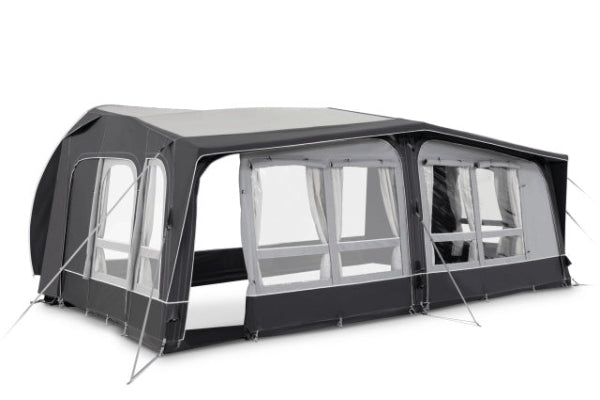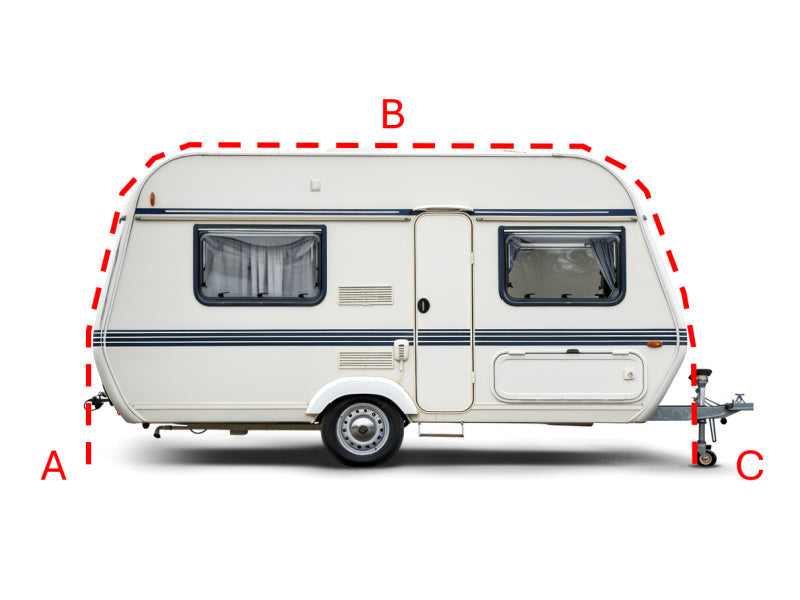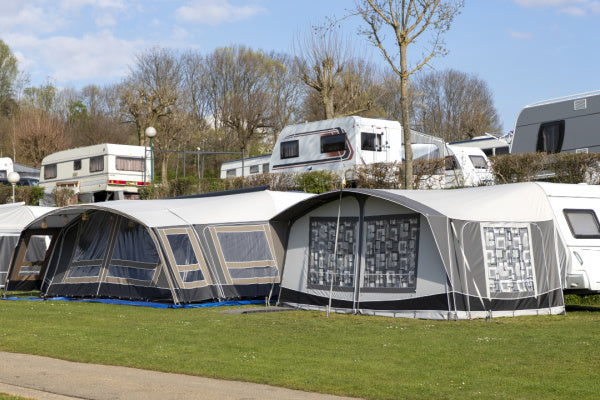Caravan Awning Not Rolling Up Straight? Here's How to Fix It
Battling with caravan awnings that refuse to roll up straight? You're not alone! The culprits are usually misaligned rollers, uneven tension, or weather damage. But fear not—this pesky problem is totally fixable with our simple guide. We'll have you back to hassle-free camping in no time.

Troubleshooting Caravan Awning Retraction Issues
Nothing ruins a peaceful morning at the campsite quite like wrestling with a stubborn awning. That familiar sight of fabric bunching up sideways while attempting to roll it away can test anyone's patience. Yet understanding why this happens – and how to fix it – can transform this common headache into a manageable task.
Common Causes of Uneven Roll-Up
Before diving into repairs, it's worth getting familiar with what might be causing the problem. Just like a poorly rolled sleeping bag, caravan awnings need the right technique and conditions to roll up properly.
Obstructions
The simplest causes are often the most overlooked. Leaves, twigs, and other debris can sneak their way into the mechanism during stormy weather or long periods of deployment.
Think of it like trying to roll up a poster with a pencil stuck in the middle – even small objects can create havoc with the rolling motion. These uninvited guests tend to gather in the corners and along the edges, creating resistance points that throw off the entire retraction process.
Regular checks during use can prevent these sneaky obstacles from becoming bigger problems down the road.
Fabric Creases and Wrinkles
Just like your favourite shirt left too long in the dryer, awning fabric develops stubborn creases and wrinkles over time. This especially happens when the awning gets packed away while damp or without proper tension.
These seemingly minor imperfections can create major headaches during roll-up. The fabric bunches and folds unevenly, creating a snowball effect that results in increasingly crooked retraction.
The good news? Many fabric issues can be resolved with proper care and attention to detail.

Misaligned Awning Arms
Support arms serve as the backbone of any awning system. When these become misaligned, the entire structure suffers. Strong winds, accidental bumps, or improper setup can knock these crucial components out of position.
Think of it like trying to close a pair of scissors with bent blades – the mechanism simply can't work as intended. This misalignment forces the fabric to retract at different rates on each side, creating that frustrating diagonal roll-up pattern.
Regular inspection of these components can catch potential issues before they develop into bigger problems.
Damaged Roller Tube or Mechanism
The roller tube might seem simple, but it's the heart of the awning system. Wear and tear can affect its performance in several ways:
-
Bent tubes create uneven rolling surfaces
-
Worn springs lose their tension
-
Damaged gears skip or stick
-
Corrosion can cause rough spots
-
End caps may become loose or damaged
Each of these issues can contribute to crooked roll-up problems in their own unique way.
Uneven Tension
Proper tension across the awning fabric works like a well-tuned guitar string. When tension varies across the surface, one side inevitably retracts faster than the other. This creates that infamous diagonal pull that makes proper storage nearly impossible.
Steps to Fix a Crooked Roll-Up
Taking a methodical approach to fixing roll-up issues saves time and prevents additional damage. Here's how to tackle each problem systematically.
Inspect and Clear Obstructions
Start with a full extension of the awning on a calm day. This provides the best visibility for spotting potential problems.
Carefully examine both sides of the fabric, paying special attention to the edges and corners where debris often collects. A soft brush can help dislodge stuck material without damaging the fabric.
Don't forget to check the roller mechanism and tracks. Small stones or twigs often hide in these areas.

Using compressed air can help remove debris from hard-to-reach spots, but avoid high-pressure water which might force dirt further into the mechanism.
Smooth Out Fabric Creases
Tackling fabric issues requires patience and the right conditions. Choose a warm, sunny day for best results.
Start by extending the awning completely. A light spray of water helps the fabric become more pliable. Allow natural tension and gravity to work their magic while the fabric dries.
Pay attention to persistent creases. These might need extra attention with a soft brush, working in gentle, straight lines along the fabric grain.
Never store the awning while damp – this only creates new problems down the line.
Adjust Awning Arm Alignment
Begin with a visual inspection of both support arms. Look for any signs of bending or damage.
Check that mounting brackets remain secure and level. Even slight shifts in these crucial components can affect overall performance.
Pay attention to how the arms extend and retract. They should move smoothly and at the same rate on both sides.
Tighten any loose bolts or fixtures, but avoid over-tightening which can cause new problems.
Check and Repair Roller Tube
The roller tube inspection requires careful attention to detail. Look for any visible signs of damage or distortion along its length.
Check end caps and mounting points thoroughly. These crucial components often show the first signs of wear.
Listen carefully during operation – unusual sounds often signal developing problems.
Test the rotation manually where possible. The motion should feel smooth and consistent throughout.
Professional repair might be necessary for internal mechanism issues, but catching problems early can prevent costly repairs later.
Adjust Tensioning System
Start with a full extension of the awning. This provides the best position for checking and adjusting tension.
Compare tension on both sides carefully. Uneven tension leads to uneven roll-up.
Make adjustments according to manufacturer guidelines. Small, incremental changes work better than large adjustments.
Test the retraction slowly after each adjustment. This helps identify whether changes are helping or hurting the situation.
Keep adjusting until achieving even roll-up. Document successful settings for future reference.
Remember that awning care isn't a one-time task. Regular maintenance prevents many common problems from developing in the first place. Establishing a routine check of these components, especially before and after trips, helps catch potential issues early.
Proper storage between trips also plays a crucial role in preventing problems. Always ensure the awning is clean and completely dry before storing, and check for proper alignment during the storage process.
When in doubt about any repairs or adjustments, consulting with a professional can save time and prevent accidental damage. They have the tools and experience to tackle more complex issues safely and effectively.
Other content you might like:
- Caravan awning not retracting
- Caravan awning not locking
- Caravan awning on hardstanding
- Caravan awning in high winds
- How to secure a caravan awning in high winds?
- How do you tie down a caravan awning?
- When should I take my caravan awning down?
- How to stop caravan awning flapping?
- Why do some campsites say no awnings?





Leave a comment